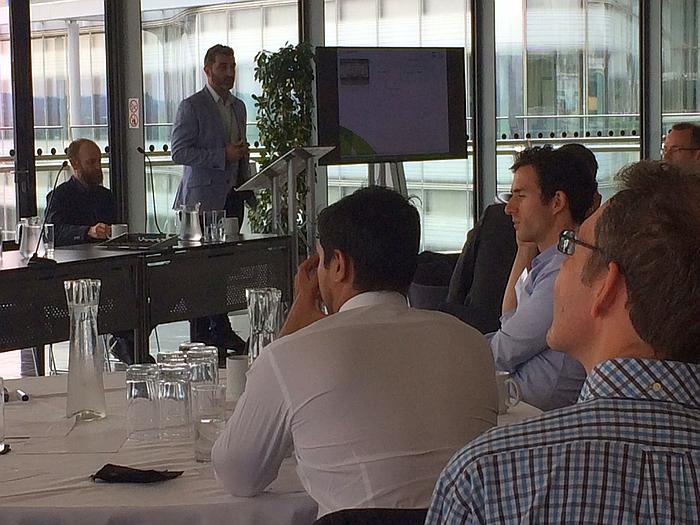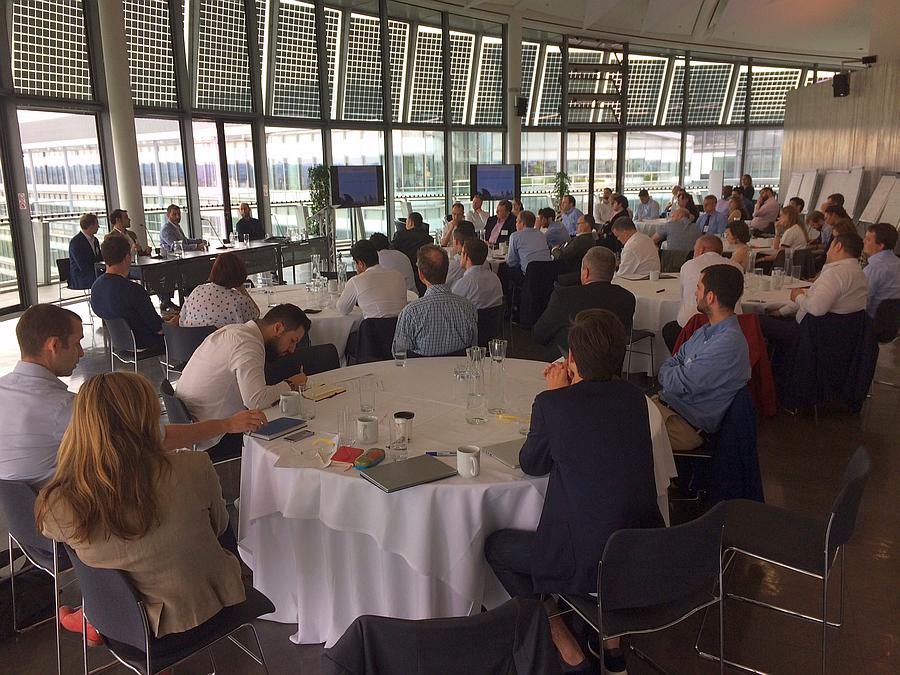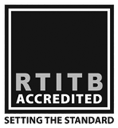London's City Hall for the Commercial EV Trial – One Year In Event.
LSA Chairman Carl Lomas was in the dome of glass with vistas from the Tower of London to HMS Belfast talking clean air at the heart of the govt of London with GLA in City Hall and express folk including Addison Lee, CitySprint, GLH, Hermes, Premier, TNT, ZE Cargo.
Sam Clarke Gnewt Cargo delivered the keynote vehicle speech. Patrick Feehily, ‘We need to get smarter about when and where we get local energy’ Christina Calderato spoke LoCITY, ‘we are helping fleets prepare for ULEZ.’ Venn Chesterton talked innovate UK project on freight trials and asked the question 'how clean is gas for alternative fuels?’.Andy Steele, delivered the results of the EV Trial one year in. ‘Smaller vehicles in the trial got to park close to delivery locations while larger vehicles had to park further away.’
Sam Clarke, head of business development at Gnewt Cargo spoke about his own London commercial EV trial,
The free delivery tag line is driving request for service. Our clients bring us volume in bulk during the night and Gnewt complete the last mile zero emission in the centre of town with an all-electric fleet. We tracked van and driver movements in central London, the data tells us we move in many circles but we are not easing congestion. Average van speed from the trial is two and half miles an hour, the vehicle moves five miles in one delivery patch where the driver is measured at walking six miles. Parking a huge issue. Vehicle size needs to be in the data mix. We began with cycles, the Nissan van was a milestone, leasing opportunities are challenged in this market. I would like to reduce our van fleet, use larger vans and less of them. Payload is critical to us, cubic capacity is the most important factor. Charging infrastructure remains difficult, our first steps in smart charging was timers between three pin plugs and the main, it can be done without investing huge amounts of money but as scale comes we moved to charging solutions from charge post hubs with EO.
The very same charge post was sat inside City Hall for everyone to get hands on with the technology.
We are leasing the vehicles on two year deals today and working with focus on vehicle to grid solutions, telematics is important to us, tracking the vehicles to get data on movement and share an accurate important is at the heart of the project. One unexpected electric vehicle problem was rodent attack on cables inside the van when parked overnight.
Patrick Feehily, Assistant Director of the GLA Environment Unit
London the greenest global city, air quality, I am not focusing on the health issue, air quality is linked to social justice, electric vehicles are the focus to de-carbonisation of transport by 2050. We have learnt nationally from achieving carbon objectives and are looking to clean London’s air. TfL estimate 30% of transport is van and heavy truck and 97% of them are diesel. As we move to more internet shopping the problem grows. We are exceeding EU limits on particulates, all of London exceeds particulate targets, majority of particulates in London comes from tyre and break wear in HGVs. We need to get smarter about when and where we get local energy. Proposal 4.2.1e focused on freight policy. Getting to the 2050 targets will be steps. We have a target of zero emission bus by 2037, we already have two clean air bus routes and they are delivering clean air. ULEZ expands for 2021. We are looking closely at scrappage scheme for diesel vans. We are investing in charging infrastructure, 113 by 2020, Mayor has set up an EV taskforce. We have been producing new budgets, working with ARUP on de-carbonisation, electrification, we need to see a reduction of energy demand in our homes, understand when it is most cost effective to then charge vehicles with energy.
Talking LoCITY, Christina Calderato, Head of Delivery Planning at Transport for London, where she has worked for a decade and led the team on the Mayor's transport strategy.
I am here today to talk LoCITY and the emission challenge, affordability of alternative fuels, knowledge and market demand for cleaner vehicles. LoCITY has 1,322 members today. Helping fleets prepare for ULEZ and looking at expanding ULEZ in 2021. We are creating simple and easy to use tools for operators to make the best decisions about future fleets, matching vehicles to need and use, making informed decisions on whole life costs of vehicles. Charging infrastructure, 300 rapid charges by 2020, there will be three EV workshops over the summer moving towards the LoCITY annual conference and roadshows where you get hands on with gas and electric vehicles.
Venn Chesterton, Innovation Lead – Low Emission Vehicles, Innovate UK.
Innovate UK/OLEVs Low Emission Freight and Logistics is about research, delivering innovation and review of upscaling from prototype to real world use. In the UK we are ahead of most of the World. Our big projects today, the range-extended Transit van, low and zero emission, getting vehicles light in weight, the Faraday challenge, vehicle to grid & the Waterloo depot challenge, can your battery be used to charge into the grid and become an energy asset?
Venn focused on freight trail for low emission, 18 funded projects, 22 million pounds of research, electric, plug-in hybrid, hybrid, LNG, CNG, hydrogen and electric TRU.
We are trying to prove these technologies work in the real world, we are collecting data of value for the freight sector. Anticipating value of gas and electric comparison between short and long distances. We are looking at the exhaust cleanliness of gas on a trial at Millbrook. Unburnt methane is a big problem to clean air. Innovate UK are reporting trials in about 18 months as the answers arrive from the TRL research. Google TRL for the first answers - there are also answers on the London Data store today.
Julian Allen from Westminster University asked how Innovate UK will review the management of logistics alongside the technology, ‘Can we save fuel within management of fleets?’
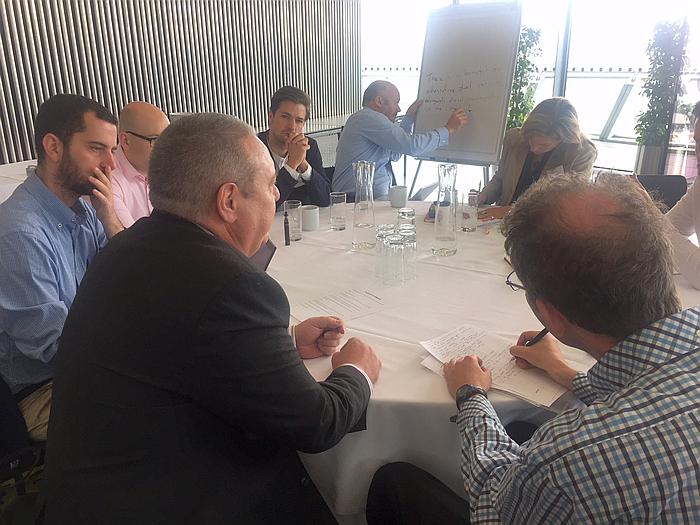
Thirty minute round table breakout session Barriers to the take-up of Commercial EVs in London and how to overcome these. Thinking and writing the answers from the tables
‘There is no priority for alternative fuel vehicles when they are sat congestion, - We need to look at barriers to charging, fleets at hubs are very different to owner drivers trying to charge at residential home locations. – Range confidence and working routes that go beyond the M25. – How do we choose vehicles that will be acceptable to other zones across the UK?
Andy Steele, Arup delivered the results of the EV Trial one year in.
Smaller vehicles in the trial got to park close to delivery locations while larger vehicles had to park further away. CO2 has been the main pollutant saving, cost savings show diesel as expensive on whole life cost compared to electric where fuel is cheap, electric cost is expected to rise and narrow this gap. Benefits of social and environmental benefits are strong when measured to adoption of electric vehicles. Payload, BD and Voltaire compared to Kango, Renault and Nissan. Charging demands peak between three and six pm as delivery routes complete. We need to spread this demand, spreading demand would allow more vehicles charged at same locations. Public charging has been measured as expensive on public sites while charging at hub is cheaper. In conclusion, the modern EVs outperform the old, smart charging is key to future and once activated can improve the local grid opportunities. Next step is to quantify the financial benefits of EVs and look at scale up numbers, more reports are coming.
Speaker Gallery
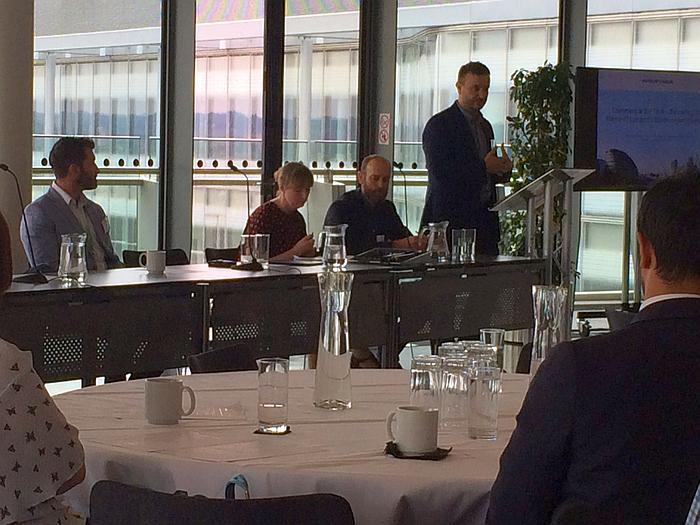
Patrick Feehily
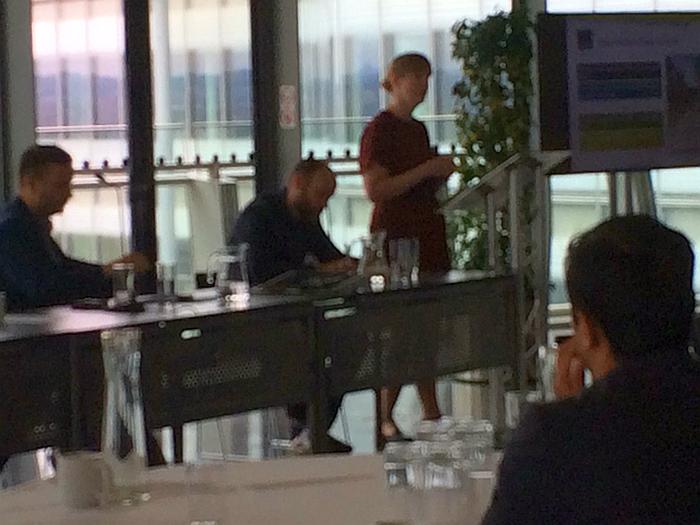
Christina Calderato
